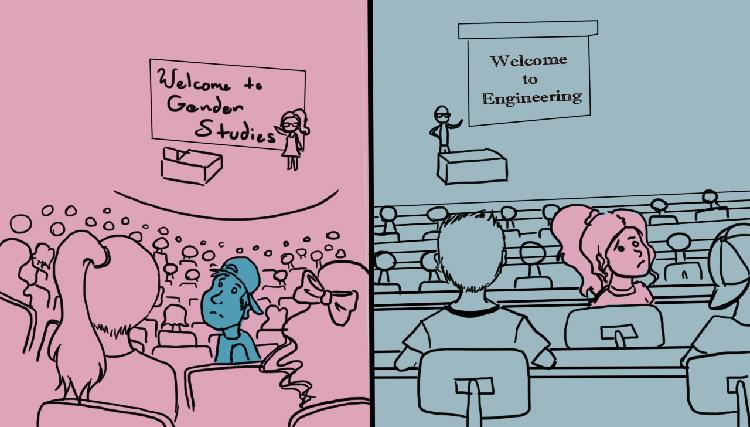If we can empower women to reach their fullest potential in the workplace, then we can work toward closing the disproportionate gap that keeps them from attaining wage equality. We can encourage achievement by motivating success.
The fact that white women make 78 cents on every dollar a white man makes, breaking down to 64 cents for African American women and 54 cents for Hispanic women, according to the U.S. Census Bureau, is not new information.
Although there are many factors that contribute to this wage gap, such as discrimination and sparse maternity leave policies, it also comes down to the differences in occupations pursued by different genders. Within these occupations, there is also a stark lack of female representation in leadership roles.
Here at Pitt, comparing the number of male and female students studying in different schools reflects this disparity.
Among the 18,757 undergraduates, 50.6 percent of students are female and 49.3 percent of students are male. Although there are more female students pursuing a degree, there seems to be a lack of female representation in a variety of majors that lead to higher paying jobs.
The Swanson School of Engineering encompasses a student body that is 73.4 percent male and 26.6 percent female. Men also outnumber women in the School of Information Sciences, with 73.3 percent male students and 26.7 percent female students. The College of Business Administration represents 59.8 percent men and 40.2 percent women.
While engineering, information sciences and business are all high-paying and secure majors in today’s science-driven economy, it is no coincidence that men dominate these fields, given the support and mentorship men have to enter high-paying fields.
According to the Department of Education, the average STEM major makes about $65,000, compared to non-STEM majors who make roughly $48,500. PayScale, a site that has compiled the world’s largest database of individual salary profiles, determined that the 10 majors with the highest salary potential were STEM majors, including fields like engineering, applied math and statistics. While women make up 48 percent of the labor force in the United States, the American Community Survey of 2009 reported that only 24 percent of women work in STEM fields. For young girls who want to enter the STEM field, this makeup is discouraging. They have less people to turn to for advice, networking and inspiration.
On the contrary, female students at Pitt dominate the enrollment of other schools that may not offer the same income security, but may offer more flexible work lifestyles to prevent from falling behind in their career after childbirth.
Women make up a significant proportion of the School of Education — 28.6 percent of its students are male and 71.4 percent are female. The School of Social Work is 13 percent male and 87 percent female. The School of Nursing is 8.7 percent male and 91.3 percent female. The School of Pharmacy is 32.6 percent male and 67.4 percent female. The School of Health and Rehabilitation Sciences is 19.7 percent male and 80.3 percent female.
The average starting salaries for each school varies. Education begins at $37,200, social work at $33,100, health sciences at $39,000, nursing at $54,100 and pharmacy at $116,500, according to PayScale.
While there is no simple solution to answer this disparity, there are several places to guide improvement.
Pitt bioengineering professor Alan Hirschman suggested “encouragement at a young age and to keep girls invested in their pursuits” as a response to the lack of female representation in STEM fields.
Hirschman has seen an increase of female students in his classes, despite racial diversity trailing behind.
Pitt isn’t oblivious to these statistics. Like many colleges across the country, the University works to encourage female students to pursue STEM fields.
This past April, Pitt hosted the Women in Medicine and Science Forum. Last year, the Swanson School of Engineering created a new graduate women in engineering network. Pitt hosts a chapter of the Society of Women Engineers. Pitt’s Medical School hosts a chapter of the Women in Science and Medicine Association. A student group at Pitt, Women in Computer Science, strongly advocates for increased female participation in the computer science profession. These efforts represent only a small sample of the University’s initiatives.
Pitt also recognizes the value of having female leaders and role models to empower women to seek higher positions. Pitt’s Chemistry Department’s Greater Pittsburgh Area Women Chemists Committee is chaired by Michelle Ward, the undergraduate analytical laboratory coordinator.
By instilling a support system for women similar to the one already in place for men in STEM, we can similarly encourage women to seek high achievement in their professional careers.
Shortening the wage gap is a hefty endeavor — but it’s possible. It’s simply a matter of making sure that women can stare out in a lecture room and feel the solidarity of supportive faces staring back.
Write to Kirsten Wong at kew101@pitt.edu


